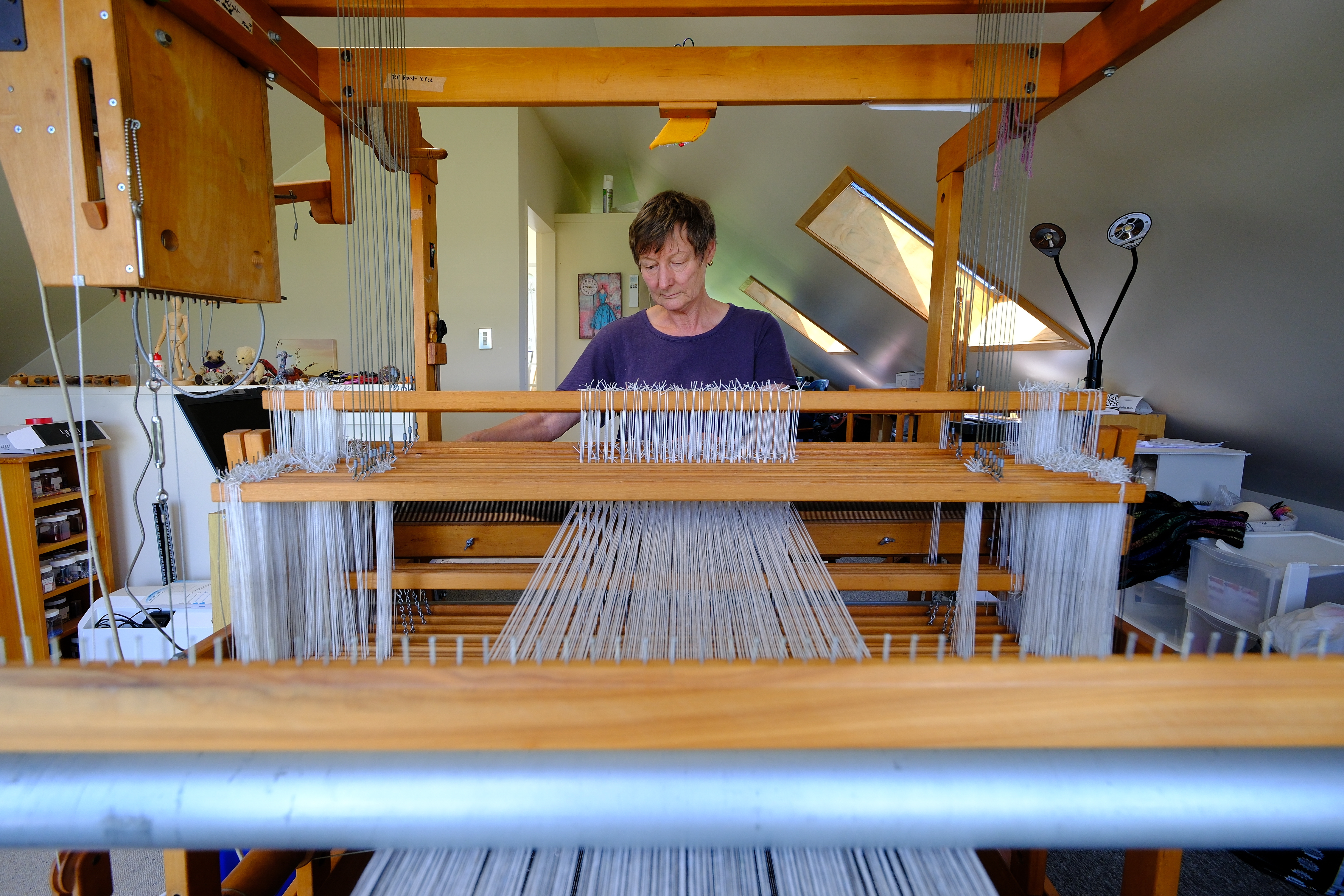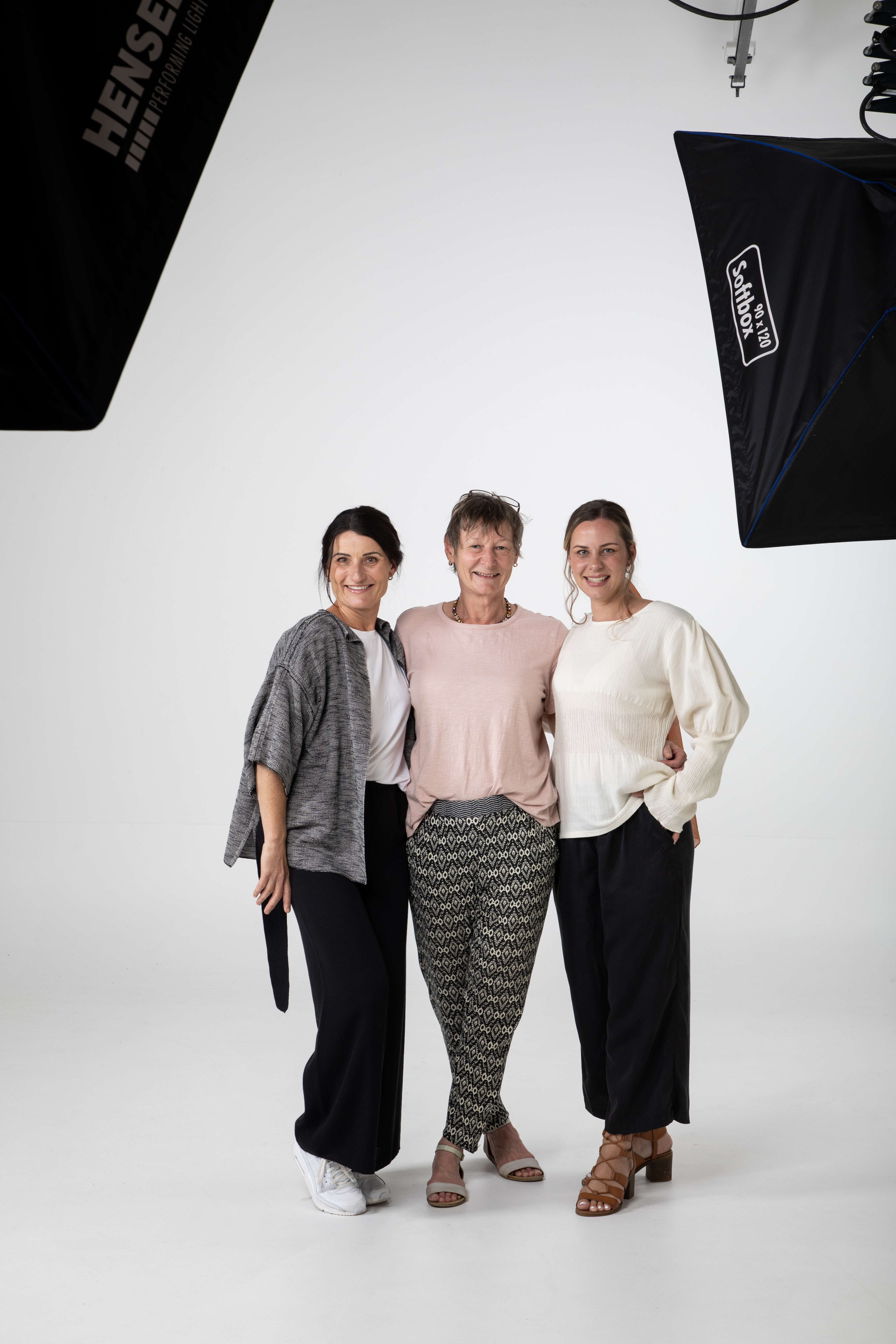Slow Fashion Masters Project: Hand Weaving Garments for the Modern World

Wintec Te Pūkenga Master of Arts student Carol Oldfield at her loom in her home studio where the creative has been working on a hand woven fashion collection for a contemporary New Zealand market. Photo: Geoff Ridder
Carol Oldfield has always worked with yarns.
“I knitted my first jersey when I was 6 years old. It was blue but we ran out of yarn, so the neck was finished in white,” laughs Oldfield.
This Hamilton local has spent most of her life living in the region and like many creatives and craftspeople Oldfield recalls her first influence being her mother.
“My mum taught me. She always made clothes for us and I’ve got photos of my sister and I wearing matching outfits.”
With a focus on sustainability and slow fashion Oldfield researched historical weaving practices to design a collection for a contemporary New Zealand market.
“Looking at minimal waste in weaving,” says Oldfield, “I needed to make my own patterns and designs for my hand woven fabric.”
She also wanted to make hand woven garments accessible and not just put aside for a special occasion.
Her bespoke collection is made up of garments that speak of simplicity and also usability with many of the items allowing the wearer to experiment with layers and function.
“I would love to say that I’ve brought weaving forward with more contemporary and modern forms,” says Oldfield.
The process may be time intensive and does result in increasing the costs of each garment, but Oldfield says that there is something special about the item being handmade.
“They will last longer and you will treasure it more.”
This philosophy aligns with messages, research and data from the slow fashion movement.

Wintec academic Rebekah Harman’s research explores ways to lower the environmental footprint during textile production and she is Oldfield’s postgraduate supervisor. Harman says the climate crisis is the number one issue of our time and in 2019 alone, there was over 190,0000 tonnes of textile waste sent to landfill in Aotearoa New Zealand.
“Any projects like Carol's that explore ways to minimize waste are critical. The most important role of fashion designer’s today is to re-imagine systems and processes that put ecology at the heart of what they do," says Harman.
When it came to developing a lookbook for the collection, Oldfield could draw on her network of fellow Wintec School of Media Art alumni. In the campus photo studios, photographer Chris Davis and stylist Brydie Senior joined together to capture the collection, alongside former Wintec hair and make up students, Nadia Dillon and Leila Coombes. Oldfield enlisted close friends Lydia Hickson and Jen de Boer to model the collection.
“It was very humbling to see my friends model the garments I’ve made,” says Oldfield.
